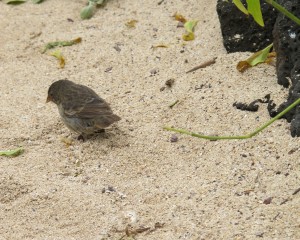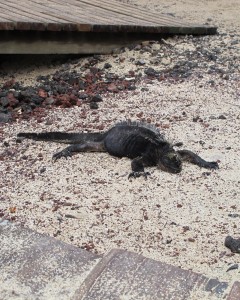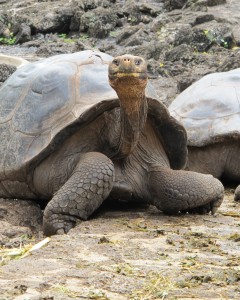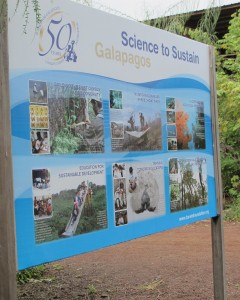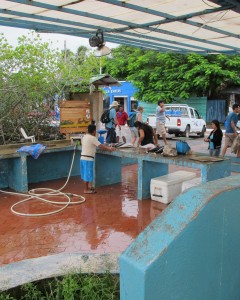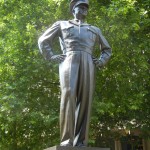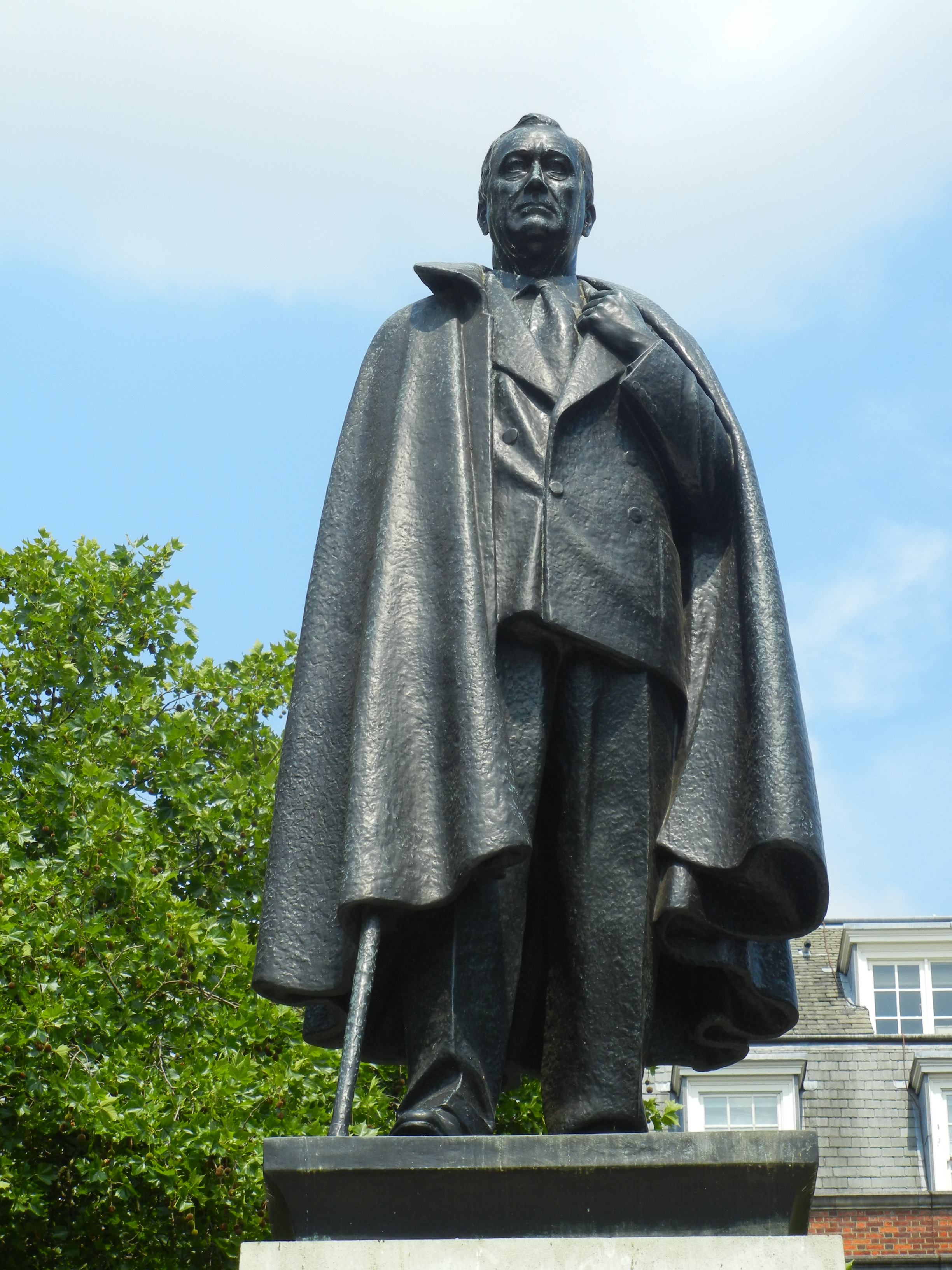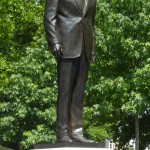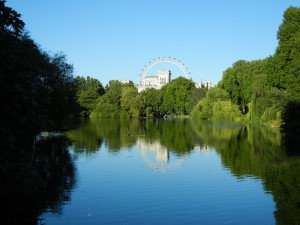Click here to check out brief profiles of the summer 2011 interns and their projects!
|
||||||
|
This is just a quick post to get some more pictures up. No real order here just some updates from outside the confines of the conference room. The best thing I’ve done so far was to diving down in Byron Bay. As I mentioned in a previous post, the area gets a good mix of big, open water fish and ornamental reef fish. We dove a site called Julien Rocks. These are small bird sanctuary islands just a 10 minute boat ride from the shore. It’s so close that you actually put your wetsuit on at the dive shop, then drive in the back of the truck pulling the boat to the boat launch (which is just the beach–no ramp, just back the trailer down the sand…), hop in the inflatable boat and head off. The dives were absolutely awesome. I have underwater pics but can’t get them off the XD card yet. Here’s a brief list of things we saw: 10-12 grey nurse sharks (the snaggle tooth ones usually aquariums)–all about 8-12′ long, tons of Wobbegong sharks (a couple as big as the grey nurses), Aussie version of goliath groupers, huge jacks, snapper, sweetlips, 5 or so turtles, dozens of small eels, and on and on. The only thing we didn’t see, which the guy I went with saw last time he dove there, was a White Pointer, better know outside of Oz at a Great White Shark. It’s apparently not too extremely unusual to see them there; unfortunately–and yes I mean that–we didn’t see one (though that’s not to say one didn’t see us…). Finally, on the 10 minute ride back to shore we see mother and calf humpback whales and single male humpbacks too (we could hear them “singing” during our dive. Absolutely awesome. Here are some shots of the area above the water.  If the rain hadn't moved in you could see Julien Rocks just a couple of Km out past this point. You can see the beach we launched from on the inside of the point.  It was about a 1/4 mile down to the end of the point and there was about 400 steps. This was on the 4" wide rail coming back up right about at the point where you'd stop paying attention... Here are some other random pics.  These change collectors for the Guide Dog School are EVERYWHERE!--grocery story, bars, restaruants, bus stops... Jen, you guys need to get in on this action. I guess it is probably a little more profitable when you have $2 coins though. My last week in Brisbane was my most productive. After making some good contacts at the end of the previous week at a carbon management seminar (and subsequent happy hour), I was able to set up some meetings with some folks from DERM, including the Acting Director of the Environment and Resource Science section. We had a good discussion about some of the water management plans and ecological monitoring programs at the State level and it was very interesting to see the parallels between many of their plan objectives and the issues they are dealing with, and the water quality and ecological targets, indicators, etc. in Tampa Bay. It makes for a productive conversation when I can convey ideas and discuss similar resource goals rather than just sitting there scribbling notes and drinking all their coffee. I also got the chance to talk to one of the social scientists working for DERM about the challenge of bridging the communication gap between science and policy. Long story short, it all comes down to personal networks and relationships. Speaking of the importance of building strong networks, I finished up the week at a two day workshop on assessing the ecological health of the catchments in the Murray-Darling Basin (MDB). Considering that a focus of my internship is the ecological health and response to water policies in the MDB, I was very excited to be invited to attend the workshop. The group was made up of senior scientists, professors and research advisers from CSIRO, Griffith U., U. of New South Wales, Monash U. and a handful of other institutions that are doing natural resource work in Australia. It was really good to get some insight on the colaboration on such a large scale and complex project and to get to know some of the movers and shakers over here. It was also good to see that a poor sense of fashion and high tolerance for alcohol are universal traits of good scientists throughout the world. I’d like to think I fit right in… On Saturday I went with my friend Brett (who I’ve been staying with) to a little town about 200 Km west of Brisbane to check out some classic car time trial races. Though racing classic cars isn’t the most sustainable past time, being that I’m coming off a broken ankle I got riding my dirt bike, I’m not about to cast the first stone. Not to mention the fact that had someone given me the keys, I guarantee I would have put the hammer down and tried to take home a trophy. Life is a balance…. Anyway, the trip did have some significance to my project as we drove over/through the great dividing range and through the headlands of the MDB. As we were coming out of the range I got a sense of how extensive the flatlands are in that area. This was also another area that was greatly impacted by the January floods and you could still see downed trees and debris lines in the now dry creek beds. The flatness of the area and the high overland flows are what contributed to the impacts from the floods and is also why water management here is difficult. OK, so I had to post this picture. One of the cool things about driving in the coutry here is that you see kangaroos and wallabies like you would see deer in the States. Unfortuneatly, like deer in the States, you see just about as many as road kill too. We didn’t see any Koalas (live or dead) but we saw these signs and I couldn’t stop laughing every time we passed one. I kept expecting to see an adjacent sign that said “Thanks for visiting Queensland. Now $#&^ off!!” Hello all, I finally got access to this blog and I finally got my pics onto my laptop from the camera, so here’s the update from my second week in Brisbane. All this week has been National Science Week throughout Australia. To some this may sound as exciting as national paint drying week, but being the science geek I am, I was super excited. It’s been a week of presentations, poster sessions and docos (documentaries-they shorten every possible word they can…). Even better is the fact that here in the Ecosciences Precinct building, where I’m working here in Brisbane, is the federal program CSIRO-where I’m interning (Commonwealth Scientific and Industrial Research Organization–kind of like our USGS and NOAA put together) and the state agencies DERM (Department of Environmental Resource Management) and DEEDI (Department of Employment, Economic Development and Innovation). And though these all sound pretty unrelated, it is only the Ecosciences and related sections that are here (ex. DERM-land and water management, office of climate change; DEEDI-commercial fisheries, energy efficiency, etc.). So part of the science week activities were show and tell sessions of all the different sections here. With ~1200 people working in the building, it’s pretty much impossible to know what even the folks down the hall are working on, so there were some cool projects to see. And for me, it was a great opportunity to introduce myself to as many people as I could while trying not to look too desperate while convincing them to hire me……..” So, what do you do? Oh yeah? What a coincidence! I’m steeped in bowfly control in cattle population research. Here’s my card….”  The Ecosciences Precinct just opened in December. Beautiful building-all of those panels are actually screens, so there is a ton of natural light. Don't know if it has any official certifications but has implemented MANY green building elements into the design.  One of the courtyards that are built into the building. Best part is that they are actually used! To not take time out and have lunch or a "cuppa" outside or in another public area is taboo. As far as attending to my internship, I’ve been mostly doing a literature review for my supervisor looking at the ecological effects on the Great Barrier Reef from sediment and nutrient transport from different land uses (livestock pasture, coastal sugar cane plantations, etc.). I also got to go out last Friday to do some seagrass sampling. A guy from CSIRO was looking at carbon dioxide and dissolved oxygen levels across seagrass beds. When he heard that I had done some seagrass work and knew how to handle a boat, he was happy to snag me from the office (however, I never thought moving the steering wheel 4 feet to the right could erase 15 years of trailering experience…). I also went out on Tuesday to help him test out a new sediment sampler that they were sending up to a project in Kakadu National Forest. They hadn’t used the sampler before, so we were supposed to figure out how to use it and then shot a little instructional video to send up with the sampler.  Brisbane waterfront. Hard to imagine that 8 months ago the water was nearly lapping up to the undersides of some of the bridges. The sediment and nutrient transport review was good to get me started in identifying the some of the issues they are dealing with in terms of their water quality. I’m still trying to get some interviews lined up with some of the DERM folks who are working on the headwaters of the Murray-Darling Basin. And I’ve got a meeting set up with a couple of the social scientist here who work with the researchers to bridge the gap between the science and the policy makers. All work and no play makes Jack a dull boy. So Wednesday was a city holiday and everybody in Brisbane had the day off. My friend that I’m staying with and I went up to the Sunshine Coast and I was able to get in a nice little surf session. The surf was pretty small (for this area) and having not been on a board in about a year and not knowing how the ankle was going to do, I decided to rent a long board and just cruise on the nice long peelers that I could see breaking off the point. The surf was good and the ankle held up OK and it felt great to be in the water again. I’m really looking forward to this weekend though as I’m going diving down on the Gold Coast on Saturday. I’m going to Byron Bay which is a spot that is apparantly supposed to have a good mix of tropicals from the Great Barrier Reef (which is a ways north of us) yet still a good spot to see some bigger pelagic species (for those of you who don’t dive or don’t know fish, that all translates to: tropicals = pretty, pelagic = …..um, well, exciting!) I can’t wait!! -Brandon The last two weeks here in El Salvador have been hectic. Week 5 I finished up the interviews in the community with the DVUD toilets. The acceptance of these toilets were greater than with the solar toilets, It also appeared that they had a better understanding of the use and maintenance of these toilets. About half of the households are using the compost for fertilizer for crops, which I was quite interested in. However, I later found out that a microbiological study was not completed in that community and storage times may not be adequate to kill of harmful pathogens. I was handed some fruit grown on a tree in which compost was used and to my fear, I was asked to taste it on the spot. It tasted okay but all I could think of was it being treated without a microbiological study being conducted. It just goes to show you what the perception of this spoiled American is towards using excreta as fertilizer. Perhaps I would have been more open to it if I had not been rushed to the emergency room with severe abdominal pain that turned out to be something I ate. And no they did not accept my insurance card, Had to pay them and hopefully I will get reimbursed! Then the rush was on to compile data in an excel spreadsheet and convert it to SPSS software to be analyzed. Remind me never to get a new software package on the week an assignment is due. It was cumbersome but with perseverance I was able to complete my final project. One of Darwin’s finches. They still show little fear which can be bad when it comes to moving vehicles..They were all very sweet and would crowd around me. I’ve really learned a lot this journey and not only about knowledge and understanding I specifically pursued. I learned a lot about inner strength and determination. I did really want to die on that boat to Floreana..I’ve never been so sick but I made it through in one piece. This has been a really rough couple months for me and I can’t wait to close this chapter. Most of my information came from speaking with people including locals and business owners from the mainland and the islands. My biggest challenge is putting everything I learned together coherently with staying focused. This is one of the iguanas. Their nesting areas are being disrupted in the more populated areas like Santa Cruz Island. I hope you all could check out my link to my personal blog (I was having problems posting on this originally). I have a cool little interview with an “eco-friendly” hotel worker. I’ve got some very good ideas for hotels from there and a couple other places:) Another week in paradise! I am truly amazed on how cordial the El Salvadorian people are, except when in comes to driving! We went back to Los Angeles to obtain more interviews and observe more latrines. I am finding that most of the households really do not have a clear understanding of the latrines or their maintenance. When asked when the last health promoter had come to see them most of them said they had never come. A flaw in the system. From the research that I have done and talking to other people who have done projects in rural communities it seems that a health promoter needs to come out regularly for the first year in order for the project to be successful. The other thing I have discovered is that it is better if the community pays a little for their sanitation systems. In contrast to what I believed when I first came into the program, that sanitation is a human right and should be given freely to all. The reality is people do not take responsibility for their latrines unless they can claim ownership. To claim ownership one must pay something even if it is pennies. I am finding that most of the solar latrines households would rather have compost. I will be visiting a compost community next week and it will be interesting to see their perception of the compost latrine is. Endangered Giant Turtle. It’s estimated that these turtles can live up to 200 years old. That means this guy has lived through climatic changes, pirates, Darwin and who knows what else! Darwin Science Center on Santa Cruz Island Local Fish Market I’ve certainly learned a lot the past few weeks. Visiting Peru and Ecuador mainland before staying in The Galapagos, proved beneficial to my overall outlook on the subject of wildlife and tourism. Valoree Skiles Hi everyone. I´ve just been able to post to this site. I´m going to try and attach my previous posts onto here in a few days hopefully. This week has been interesting. Jo-Anne Swensson As Americans celebrates their independence from English rule, I wanted to find a way to pay tribute to my citizenship in the country from which we fought for our independence. It was not as hard as I had initially thought, thanks to Margaret Thatcher. Today a bronze statue of our former President Ronald Regan was unveiled just outside the US Embassy here in London. The ceremony was met with all the fanfare one would expect for the man who helped to end the Cold War: attendance by former Secretary of State Condalezza Rice, music by the US Marine Corps Marching Band and American doughnuts and hot dogs. Many Brits were carrying flags of our two nations and “queuing” to have their picture taken with the statue. Such a ceremony had me wonder how many statues of Americans are there in London? I decided to make it my Independence Day mission to find and photograph some American icons (and have a cheesburger and fries). Grosvenor Square Park is now home to three statues and a 9/11 memorial. Bronze statues of Dwight D. Eisenhower and Franklin D. Roosevelt look upon the park visitors with dignity and honor. Two more statues, George Washington and Abraham Lincoln, are also in London and will be visited when I head over to Trafalgar Square and the House of Parliment during my sight-seeing trip. Regardless of where I spend Independence Day, I am proud to be American and thankful for my freedom. Happy Independence everyone!!! I arrived safely in London last Sunday and was able to acclimate rather quickly, the weather was reminiscent of Florida 80+ degrees and high humidity. It has only rained twice since my arrival, which is good because I’ve become quite the walker. The only away to get around is on foot and via tube or bus and I am quickly becoming a tube guru. I spent the first two days getting used to my surroundings and exploring the city. It is an awesome experience to see buildings still in use that were built over 400 years ago and the parks that are sprinkled throughout the city are nice quiet retreats to the hustle and bustle of city life. |
||||||
|
Copyright © 2025 Patel School of Global Sustainability - All Rights Reserved |
||||||










